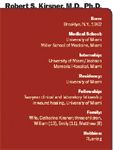- Acne
- Actinic Keratosis
- Aesthetics
- Alopecia
- Atopic Dermatitis
- Buy-and-Bill
- COVID-19
- Case-Based Roundtable
- Chronic Hand Eczema
- Drug Watch
- Eczema
- General Dermatology
- Hidradenitis Suppurativa
- Melasma
- NP and PA
- Pediatric Dermatology
- Pigmentary Disorders
- Practice Management
- Precision Medicine and Biologics
- Prurigo Nodularis
- Psoriasis
- Psoriatic Arthritis
- Rare Disease
- Rosacea
- Skin Cancer
- Vitiligo
- Wound Care
Article
Racing against more than the clock
Dermatologist Robert S. Kirsner, M.D., Ph.D., has run five marathons - crossing the finish in one last year in an impressive 3:36.

The professor of dermatology and vice chairman of the department of dermatology and cutaneous surgery at the University of Miami (UM) Miller School of Medicine, Miami, says running not only keeps him healthy but also helps to him to relax and focus his mind.
"When you run, there is often the desire to give up, and you have to overcome your body's desire to quit," Dr. Kirsner says. "I think it is discipline that helps you get through."
Interests in skin cancer, wound healing
Dr. Kirsner started doing dermatologic research in medical school, when he and colleagues studied the blood flow around basal cell carcinoma and correlated it with tumor margins.
"It was probably one of the first clinical studies of angiogenesis in dermatology, which has become a very hot topic," he says.
Wound care fascinates him, because he says many of the skin problems that dermatologists and other providers encounter regularly present as wounds.

Broadly, Dr. Kirsner has an interest in understanding why some wounds heal and some do not and what can be done to improve healing. He asks the research questions: What separates those whose wounds will heal from those whose wounds will not? How can one predict the outcome?
While clinical information can predict who is likely to heal, linking that to cellular and molecular levels, including gene expression in nonhealing wounds, is more likely to provide useful information to design and study novel treatments.
Dr. Kirsner has a longstanding interest in skin grafting and bioengineered skin. He is believed to be the first to have applied the tissue-engineered skin Apligraf (Graftskin) to a patient, in 1992. That product is now approved by the Food and Drug Administration (FDA) to treat venous leg ulcers and diabetic foot ulcers.
"What we have been trying to understand, since then, is how these skins work," Dr. Kirsner says. "We have come to realize that they work by stimulating healing through a variety of mechanisms. One is that they produce growth factors and cytokines that help to stimulate healing. They alter the biochemical balance in the wound and improve biochemical abnormalities that may be present in chronic wounds. Usually, the cells that you apply do not last that long, but still seem to work because of these other mechanisms."










